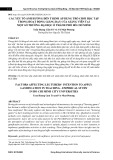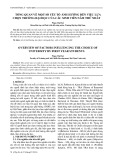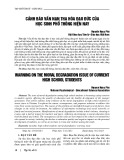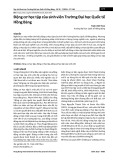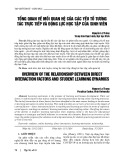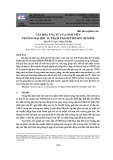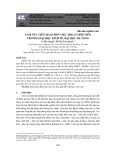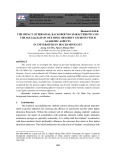
82 TRƯỜNG ĐẠI HỌC THỦ ĐÔ HÀ NỘI
THE FLOWERING AGE IN CHILDREN’S LITERATURE:
THE JOURNEY OF GROWING UP OF CHILDREN IN SOME
SOUTHEAST ASIAN NARRATIVES
Trịnh Đặng Nguyên Hương
Vietnam Institute of Literature
Abstract: Economic, political, cultural, and social issues in Southeast Asian countries are
often the focus of attention, with limited emphasis placed on children's literature in the
region. This article utilizes the juxtapositional model of comparison to analyze three
notable works of Southeast Asian children's literature: Chai thời gian [Bottle of Time] by
Prabhassorn Sevikul (Thailand), Tôi thấy hoa vàng trên cỏ xanh [I See Yellow Flowers in
the Green Grass] by Nguyễn Nhật Ánh (Vietnam), and Chiến binh Cầu Vồng [The
Rainbow's Troops] by Andrea Hirata (Indonesia). The study centers on exploring the
challenging journey to adulthood experienced by the child protagonists in these works,
examining how they confront various events that help them grow and discover deeper
meanings in life. Additionally, it introduces a new conceptualization of the age range from
12-13 to just before 18 years old, highlighting the significance of this transitional period,
which encompasses changes in the physical, mental, and cognitive development of children
at this stage.
Keywords: Juxtapositional comparison model, childhood turmoil, forces of resistance and
drive, transition to adulthood, Southeast Asian children's literature.
Nhận bài ngày 10.8.2024; gửi phản biện, chỉnh sửa, duyệt đăng ngày 26.9.2024
Liên hệ tác giả: Trịnh Đặng Nguyên Hương; Email: trinhdangnguyenhuongvvh@gmail.com
1. PROPOSED ISSUE
Southeast Asian literature has long been the subject of Western studies. For example,
Benedict Anderson’s Imagined Communities: Reflections on the Origin and Spread of
Nationalism (1983) analyzes the novel Noli Me Tángere (1887) by Filipino writer José
Rizal (1861-96) to demonstrate the involvement of literature in the formation of the
imagined nation. Other works such as Thelma B. Kintanar’s Self and Society in Southeast
Asian Fiction: Thematic Explorations in the Twentieth Century Fiction of Five ASEAN
Countries (1988), Tony Day’s “Self” and “Subject” in Southeast Asian Literature in the
Global Age (2007), Penny Edwards’s Cambodge: The Cultivation of a Nation, 1860-1945
(2007), and Jan van der Putten’s Traditions Redirecting Contemporary Indonesian Cultural
Production (2017) also focus on Southeast Asian literary works. In addition, there are also
voices from insiders - Southeast Asian scholars - such as Essays on Literature and Society
in Southeast Asia: Political and Sociological Perspectives (1981) edited by Seong Chee
Tham, The Southeast Asian Woman Writes Back: Gender, Identity and Nation in the
Literatures of Brunei Darussalam, Malaysia, Singapore, Indonesia and the Philippines
(2017) by Grace V. S. Chin and Kathrina Mohd Daud, and Literature and Nation-Building
in Vietnam: The Invisibilization of the Indians (2021) by Chi P. Pham. These studies have






